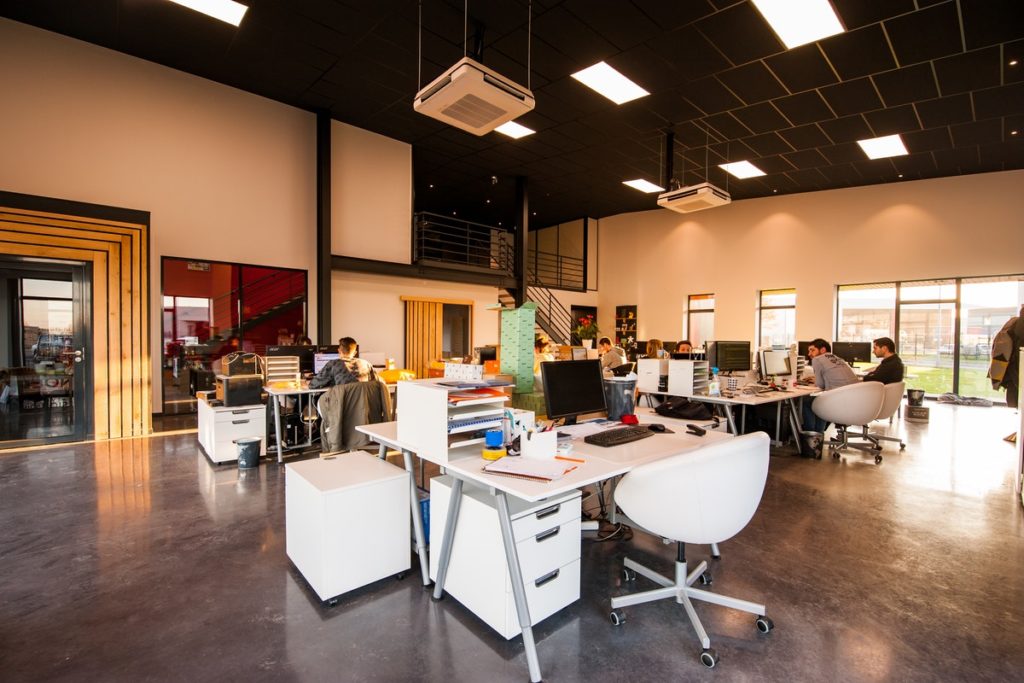Many companies in the United States have indefinitely postponed their return to the office due to the spread of Omicron. Forbes reports on a Gartner survey showing that 44 percent of companies have rescheduled their employees’ return, and nearly 20 percent are limiting the number of employees who will be at the office at the same time. The office will not entirely disappear, though. In fact, in particular companies, some employees have already begun working in the office last year.
Given the unpredictable developments surrounding COVID-19 and its variants, with more expected to appear, companies may have no choice but to go hybrid. Most experts believe that the common work arrangement for 2022 will indeed be hybrid work, where employees have the flexibility of working remotely for a few days a week and at the office for other days. Many employees want this. According to theHRDIRECTOR, a recent Reed study showed that 45 percent of employees who are not currently in hybrid work arrangements would consider quitting to find such type of work.
Hybrid work requires many changes in the office. Innovations in technology will help a lot in achieving these.

Technology to Protect Employees’ Health
One of the primary reasons people want to limit their exposure at the office is to protect themselves and their families from COVID-19 infection. Therefore, the hybrid office must be redesigned to minimize, if not eliminate, the transmission of the virus. For instance, touchless systems can be used for doors, switches, and faucets, among others. Companies can source these easily from suppliers and websites like bannersolutions.com.
For screening people who can enter the office, the touchless door opening system can be linked with a mobile phone app that detects the employee’s fingerprint. To ensure that a person with a fever does not enter the premises, a body temperature sensor can be placed by the door as part of the security protocols.
Self-cleaning surfaces must be used wherever possible, especially on desks. Employees will be at the office in rotation, and there will be fewer desks spaced at least six feet apart, so they will share the use of these desks. Self-cleaning surfaces can also be used in the pantry, bathrooms, and other common areas.
To further support employees’ health, companies can provide desks that can automatically shift to a standing desk. Current research has shown that sitting for extended periods is harmful to the body. Employees can set their own alarms to remind them to shift from sitting to standing. Being fitter increases the body’s resistance to illness. Chairs must also be ergonomically designed to reduce fatigue and body aches. This will contribute to higher productivity.
Technology to Assist Hybrid Work
A smart hybrid office must ensure smooth communication and collaboration among employees at the office and those working remotely. Teams must have virtual meetings even if they are on different schedules. This means that the company provides employees at home and the office with high speed and stable business-level Internet service and robust software for video conferencing.
This must be integrated with a virtual whiteboard, document sharing, and real-time virtual editing, among other collaborative tools. In some industries, the use of virtual reality headsets and software for meetings can be more immersive and productive. For instance, this can enable engineers to virtually walk through a plant.
Having a hybrid system also requires a great employee management software system that is cloud-based. This automates the tracking of schedules, meetings, attendance, deadlines, submissions, and other work aspects, putting everyone concerned in the loop. It can gather the employees’ preferred schedules for being at the office and automatically create a schedule to accommodate everyone while not exceeding the maximum number of people allowed in per day.
The management system can provide silos divided by teams and, within that, by work project. Managers can easily monitor the status of any project just by accessing its folder. To ensure data security, access to each project must be limited to those directly involved in it and their managers.
With many people working from home, a company must have a team of technicians on call during work hours to do online troubleshooting should any problems arise. It is also best for companies to issue work-only laptops that employees use both in the office and at home. This means that any personal online activities of the employee will be on a separate personal computer, reducing the cybersecurity risk for the company.
Cybersecurity measures must be strictly implemented by employees both at the office and elsewhere. Company laptops must be equipped with a strong cybersecurity system. Work done at the office and elsewhere must be automatically backed up on the cloud in real time. This will ensure that there will be no data loss in case of a breach or any other downtime.



